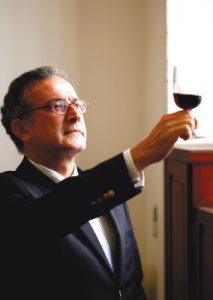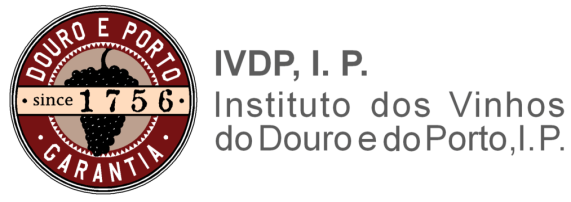CVR DOURO E VINHO DO PORTO

Dr. Manuel de Novaes Cabral
President of the IVDP – Douro and Porto Wines Institute, I.P.
曼努埃尔•德内瓦斯•卡布罗
杜罗河葡萄酒及波特酒研究院院长
![]()
The influence of Wine in the Douro Landscape1
The landscapes of wine regions are an asset that must be preserved, as they bestow the surrounding territory with an identity, as is the case with the Douro Specified Region. The landscape, and the territory in which it is situated, have always been at man’s disposal to transform, as per the necessity of his activities. The Douro valley is a clear example of this.
In this regard, wine will always be unmistakably associated to the territory where it is produced, its region of origin, bringing in its wake an assortment of other related activities, such as food, regional produce, hospitality and restaurants, thereby stimulating the local economy, creating jobs, settling the population, recovering heritage and helping to preserve local uses and customs by bringing them added value.
Wine is no longer a mere product; it is also a status symbol. Interest in wine has grown tremendously, alongside interest in food. The tourism industry has also grown by leaps and bounds, since the 80’s.
Tourism which was once reduced to sun and beach has become more urban, popular and sophisticated. Today’s tourist is more cultured, has a better grasp of technology and informs himself before travelling. People no longer take long holidays, preferring the concept of city-breaks, with short incursions to quality locations.
In this sense, the Douro wines are increasingly interesting. Consumers want to learn more and more about the wines they consume. They want to know the stories, so as to show that they are informed about those wines, these are stories we must work on, and know how to pass on. With wine, one is exporting an image; the image of an estate, a region, a country. In so doing, we are establishing a dialogue between the home region and the consumer.
The quality of the territory is obviously an aspect that adds value to the wine. The designations of origin are very important in regulating the sector and affirming the identity of the product. Nowadays, however, they are not enough, as they are very product-centred and do not coordinate the variety of different agents that operate on the ground.
In my opinion this is not good for the product. When wine is considered merely a drink, we are faced with two problems: First, the loss of the identity which is at its root. On the other hand, we run the risk of wine being seen merely as an alcoholic drink, rather than nourishment which contributes in an irreplaceable manner to the sustainability of the territory.
On the other hand, we must stress the importance of the raising of the Mediterranean Diet and French Cuisine to the status of UNESCO World Intangible Heritage in 2010, which can be of the great importance to the framing of wine as nourishment and as a cultural element, considering the importance of wine in both of these cases. The UNESCO decision underlines the fact that the term diet comes from the Greek diaita, which means “way of life”.
Therefore, we can see wine as the product of a local culture, nourishment and, also, part of a “way of life”! Wine and food are also fashion. They arouse interest, capture attention. It is necessary to offer novelty, but also to remember that it is important to preserve the character and identity of the territories. These are encapsulated in the physical aspects and, more importantly, in the people, which is why wine and food are such important tourist magnets which can, and should, be explored in an integrated way by both urban and rural locations. Douro and Port wines are produced in the Douro Specified Region, and Port wine has always been consumed both in the city and sold through it, to such a point that the city has leant its name to the most noble and international of Portuguese wines: Port Wine. The wine, the city and the Douro are, in fact, an excellent example of positive interaction between territories, and between the product and the territory.
1 Adapted from the inaugural address at the opening of the Annual Congress of the OIV – Organização Internacional da Vinha e do Vinho, Oporto, June 2011.

Discover the list of producers in this region here.
![]()
葡萄酒 在杜罗河地区的建设中1
葡萄园的风光—比如最典范的杜罗河谷葡萄酒区—是值得保留的财富,因为正是这些葡萄园赋予了这片土地独特的风貌。
土地是风景的基础,在过去的岁月里,因为人类必要的发展活动的力量,土地和风景总是要准备好接受人类带给它们的变化。杜罗河地区就是一个明显的例子。
从这个角度看,葡萄酒和酿造它的土地,和它的原产地,有着明确的关联。跟葡萄酒一起,一系列其它补充产业活动被以积极和互补的方式带动起来:从美食到本地区产品,从酒店业到餐饮业……这样,葡萄酒不但使当地经济充满活力,创造了许多就业岗位,稳定了人口,修复了遗产古迹,还有助于保留、延续当地的风俗传统并使它们变得有价值。
葡萄酒已经不再是单纯的消费品,它已经变成了一种地位的象征。因此,人们对葡萄酒和美食的兴趣得到了极大的增长。与此相对应的,从上世纪80年代起,旅游业也上升到了一个新的层面。
从那时开始,寻找阳光和海滩的旅行让位给了更为城市化的旅游。游客增加了,但旅游业也出现了新的复杂性。新的游客们更有文化,掌握着技术,在旅行之前,他们已经获得了相应的资讯。同时,人们不再度长假,而是更喜欢深入一个有品质的地方进行短期的城市休闲游。
从这个意义上看,杜罗河葡萄酒引起了越来越多的兴趣。消费者们想要学习更多更多的知识,那些与他们消费的葡萄酒有关的知识。他们想要知道与葡萄酒有关的故事,以便展示他们非常了解这些葡萄酒。而我们必须要掌握这些故事,而且要懂得怎样讲述。所以我们说,随着葡萄酒输出的是一个整体形象。一个庄园的形象,一个地区的形象,一个国家的形象。就这样,消费者和酿造葡萄酒的地区之间建立了对话。
高品质的土地是葡萄酒产品升值的一个明显元素。一方面,原产地控制命名对于规范这个行业和确认识别产品来说是最为重要的。但今天这还不够,因为它的作用集中于产品本身,而无法在土地上所有涉及的不同因素之间扮演推动者的角色。
我的理解是,这个事实对于产品来说是有害的。如果葡萄酒仅仅被认为是一种饮料的话,就会出现两个问题。首先,失去了原产地的识别特征。其次,葡萄酒还面临着被认为是一种单纯的酒精饮料的危险,而忘了它也是一种食品,而且对于地区的可持续发展做出了不可替代的贡献。
另一方面,最近在2010年,联合国教科文组织委员会把地中海饮食和法国美食同时评定为人类非物质文化遗产,这应该引起我们的特别注意,因为葡萄酒在其中具有重要的作用,这个评定可能对于我们把葡萄酒作为食品和文化元素来处理起着重要的作用。还要说明的是,联合国教科文组织强调,“饮食”这个词来源于希腊文“diaita”,意思是“生活方式”。这样,我们将葡萄酒作为地方文化的一种产品,作为一种食品,还作为“生活方式”的一种而拥有。
葡萄酒和美食是时尚。对于它们的兴趣在增长,它们俘虏了大家的注意力。虽然有必要在其间增添新鲜的东西,但永远不能忘记要保持地区的特点和身份标识。这不但要通过物质方面来保证,更重要的是,要通过人。所以,现在葡萄酒和美食是两个旅游业的法宝,无论是在乡村还是在城市,应该而且可以用互补的方式经营它们。
杜罗河葡萄酒和波特酒是在被划定的杜罗河酒区酿造的,而波特酒从来就是通过城市被出售并且在城市被消费掉。波尔图城自豪地将自己城市的名字“借”给了最为高贵和国际化的葡萄牙产品:波特酒。
此外,葡萄酒、波尔图和杜罗河地区三者共同构成了一个地区与地区之间、产品与土地之间良好互动的绝佳范例。
1 – 2011年7月,在波尔图召开的“国际葡萄和葡萄酒组织年会”开幕式讲话稿

Comments are closed.